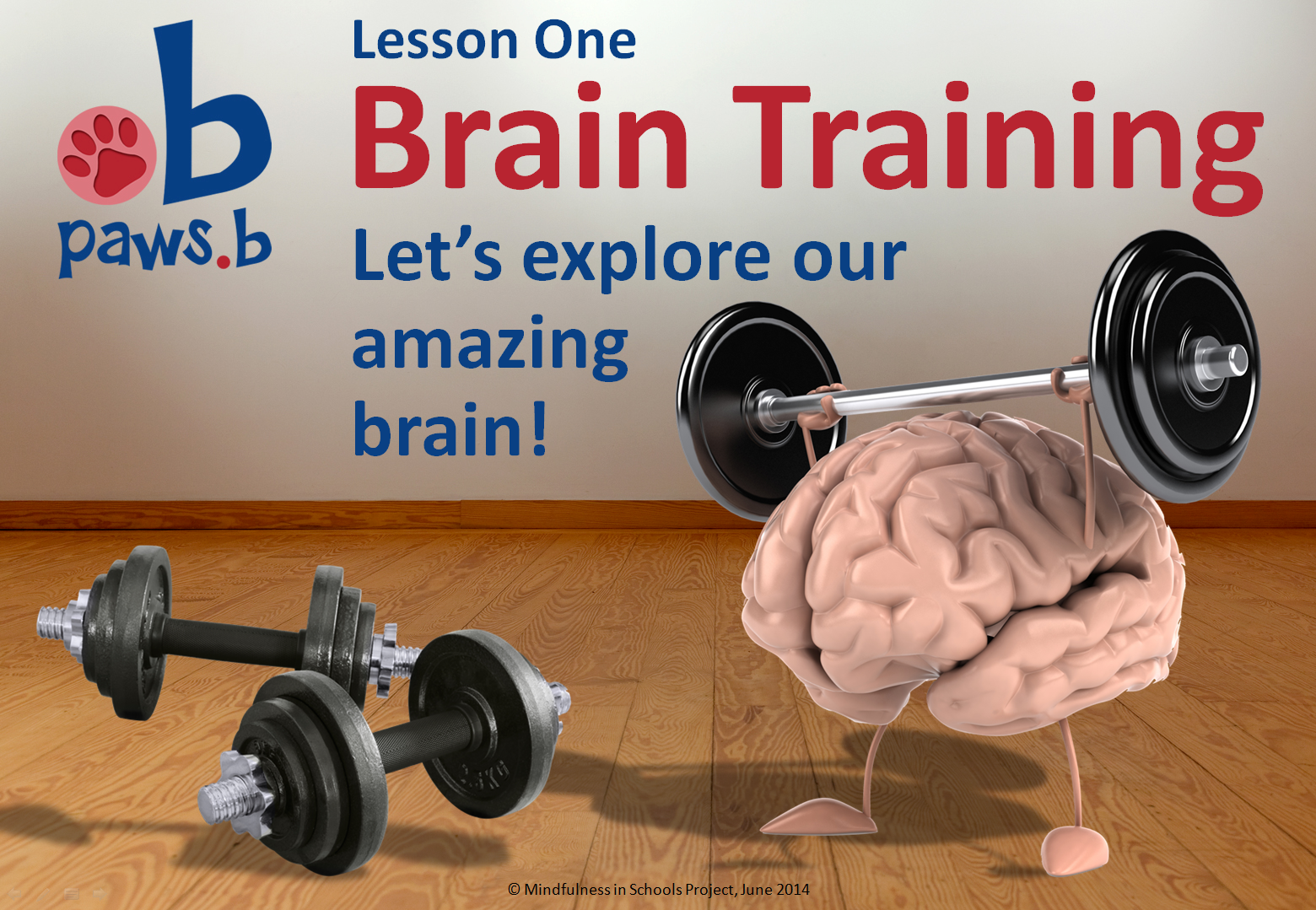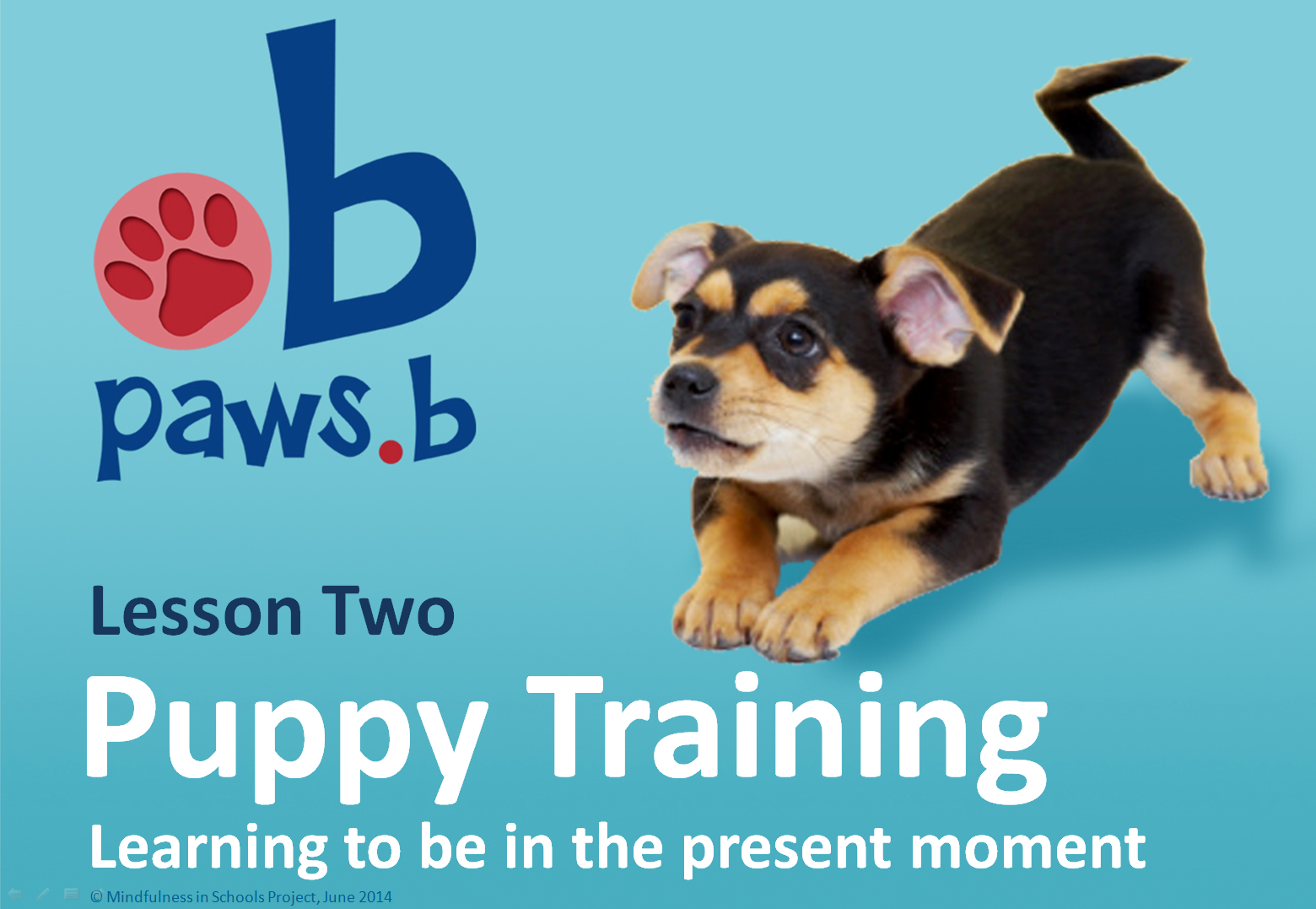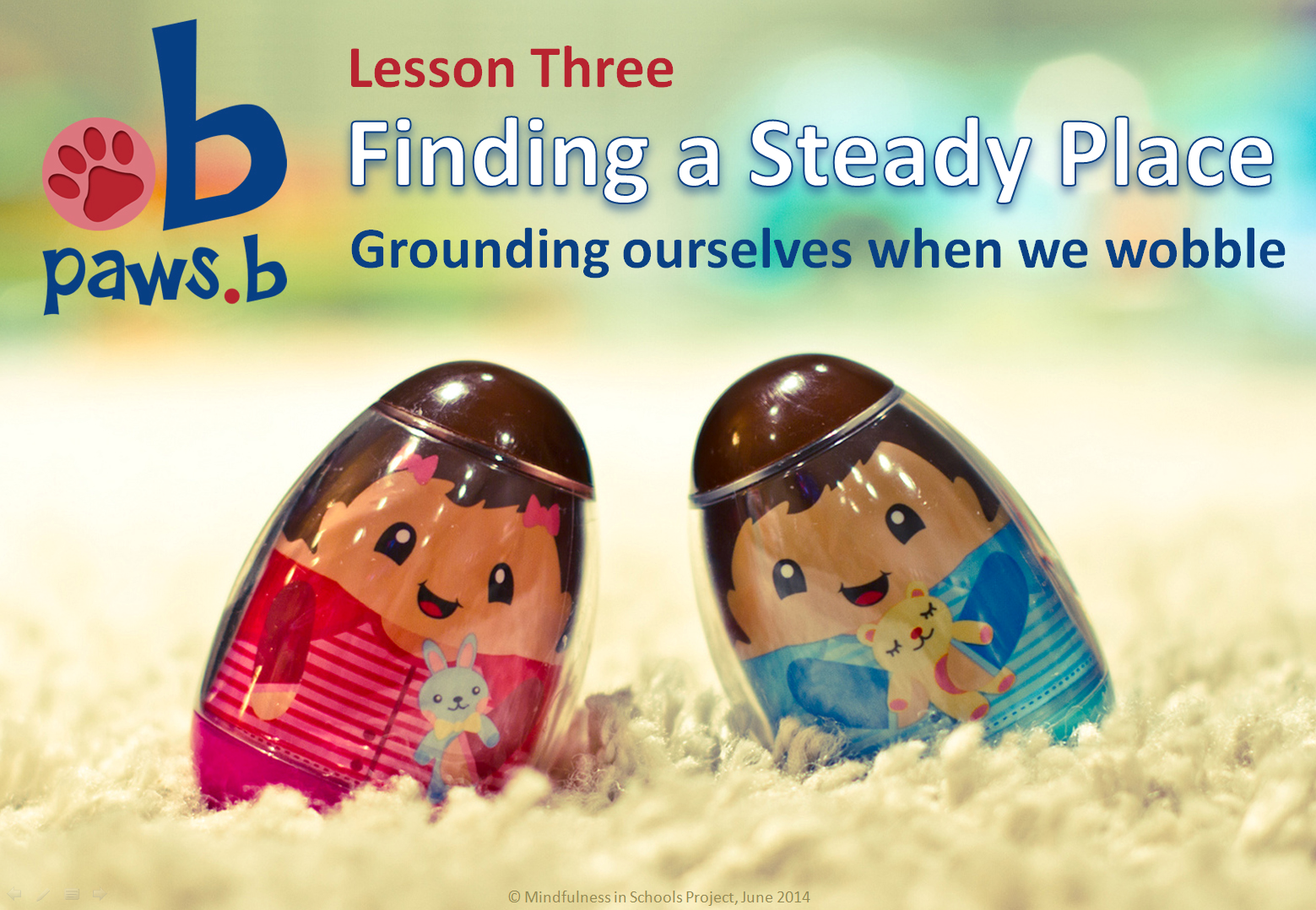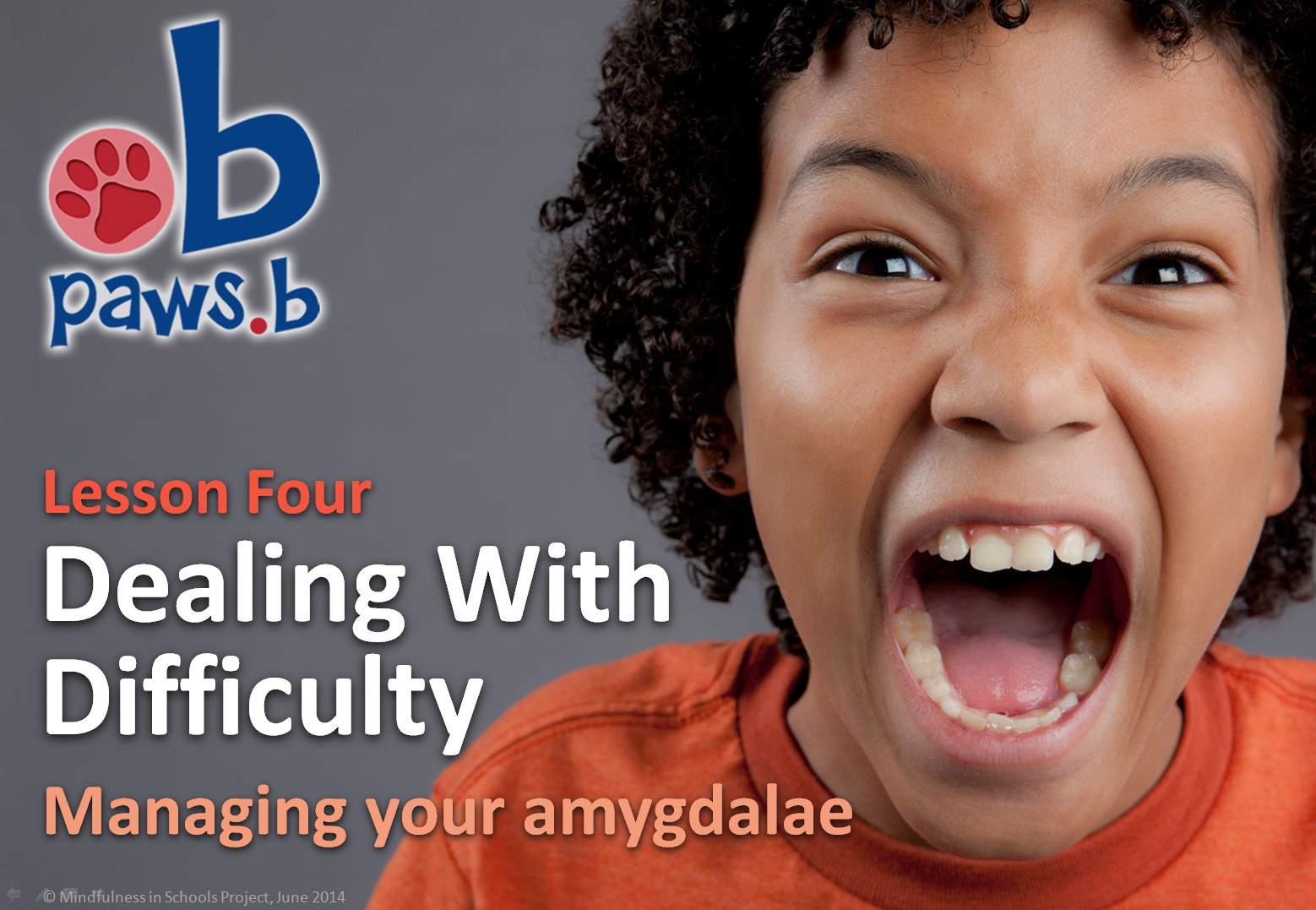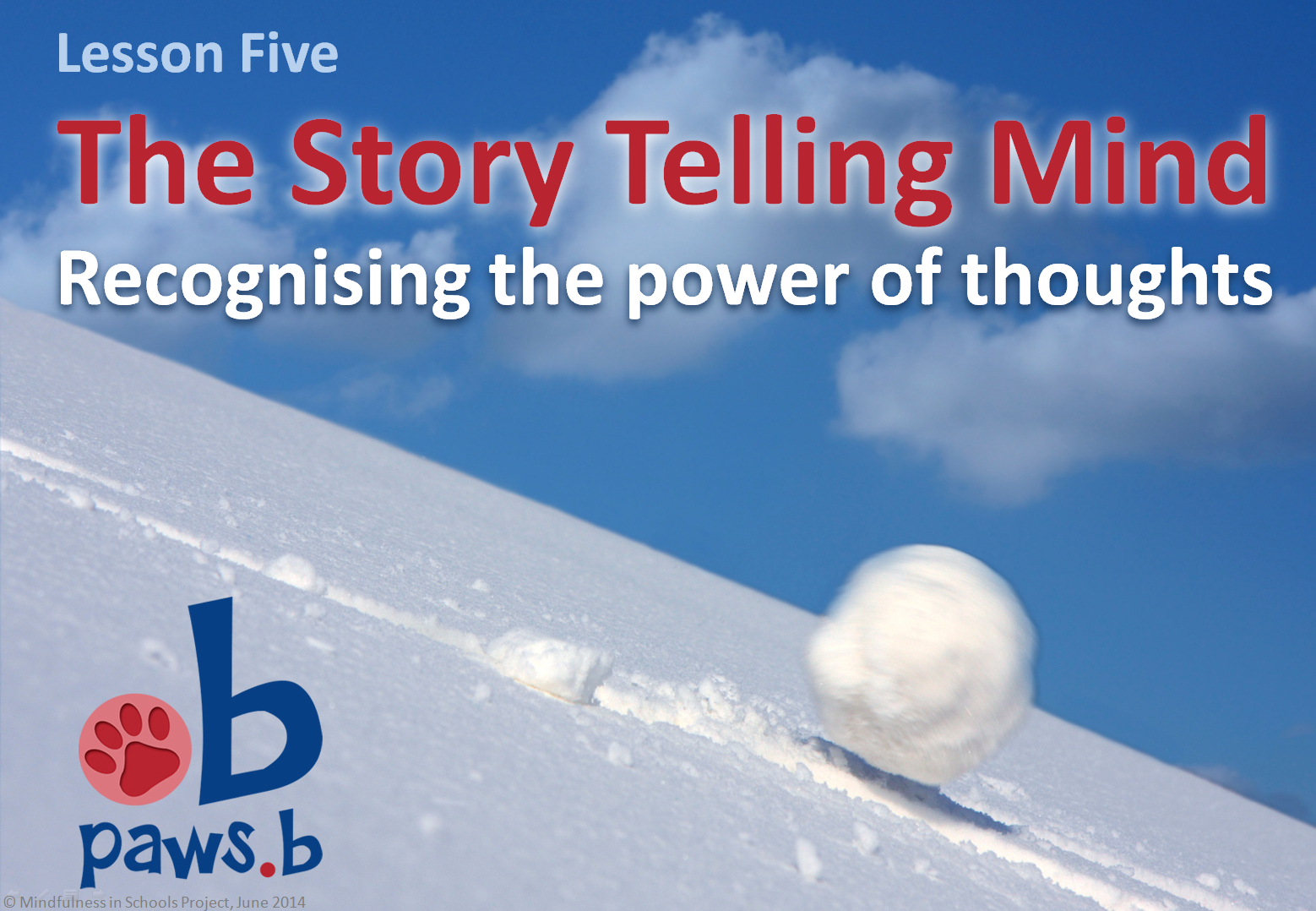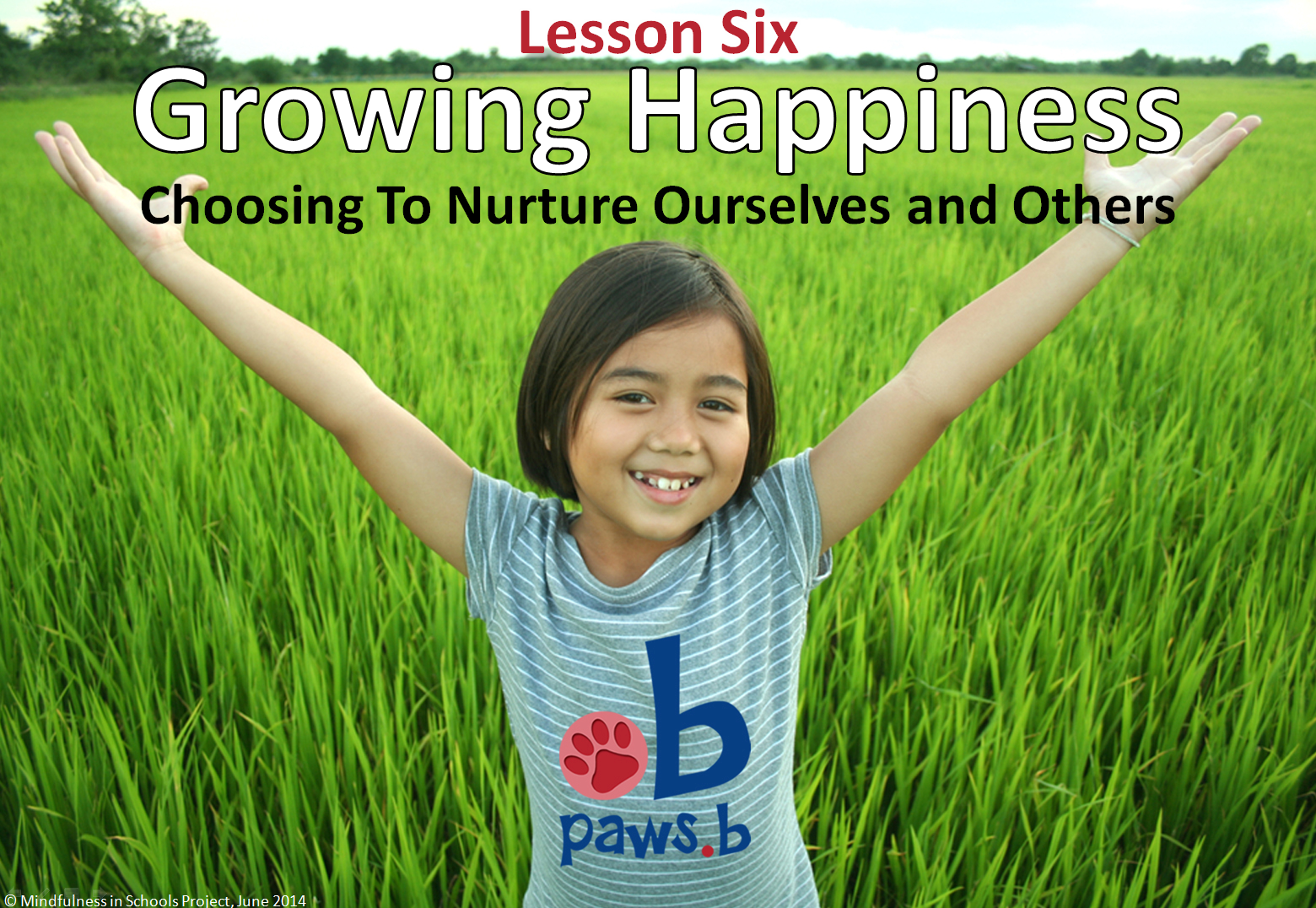paws .b | A Primary School Mindfulness Curriculum
paws .b stands for ''Pause, Breathe and Be''.
Introducing the life skill of Mindfulness to 7-11 year old children as a series of 6 engaging and practical classroom lessons.
Contact me to learn more & discuss how paws .b can fit into your school.
Course Overview
What is paws .b?
paws .b introduces mindfulness to children in years 3 to 6 and is delivered in the classroom as a series of 6 PSHE lessons. The course develops:
- Skills for greater happiness and well-being.
- Strategies for relaxing and finding peace and calm.
- Healthy coping strategies for stress, anxiety and every day worries.
- Better focus - supporting learning, behaviour, performance and decision making.
- Improved relationships with peers, teachers and family.
- Understanding of one’s own mind and what makes for a happy, healthy person.
Each lesson brings to life a different theme of mindfulness; pupils learn simple practices and techniques that they can use in their everyday lives. By training our attention to be in the present moment we develop the ability to calm the mind, improve focus, manage stress and to step back from negative thoughts. The benefits to the child and to the classroom can be striking.
Why mindfulness in primary education?
The need to teach healthy coping strategies in early education has never been more urgent. By teaching children at a young age we are helping to develop invaluable skills for life. This programme equips children with a toolbox of skills from an early age that they can take with them and use as they develop through their lives. It supports, in a highly practical way, the child's emotional development; learning to recognise and regulate one's emotions - vital to learning and personal well-being.
Primary schools can often be busy, noisy and overwhelming places for young minds. It is important that we provide the opportunity for children to pause, breathe and be with themselves. Our personal well-being is central to our happiness, learning and future success - a key ingredient in the education of a whole-child. We find pupils enjoy that time and space, taking to the practices enthusiastically. Fortunately, young children are natural explorers who haven't yet forgotten how to be mindful - this makes it a wonderful age to offer them the experience of mindfulness.
In The Media
paws .b at Mindfulness in Schools Conference
Background
The curriculum has been created by classroom teachers and committed mindfulness practitioners in conjunction with the Centre for Mindfulness Research and Practice at Bangor University. Developed with school children at Colwyn Bay primary school in North Wales since 2010, it has now been piloted in a range of schools in the UK and internationally.
I am a Certified paws .b Teacher, experienced in delivering the programme in the classroom and I have been practicing mindfulness myself for 5 years. I am truly passionate about equipping young people with the skills they can learn to lead a happier and more fulfilling life.
Overview of Lessons
The 6 lessons teach a different theme each week, building an understanding of the mind while developing skills through practice. Pupils learn simple & effective mindfulness exercises they can begin using straight away. A short Home Practice is given after each session to encourage pupils to bring the benefits of mindfulness into their everyday lives.
What do children say about paws .b?:
‘‘Mindfulness helps me concentrate in class and work to the best of my abilities.’’
‘‘A great way to relax and focus on the here and now. It helps me stop worrying and getting caught up in stories in my mind... it helps with nerves.’’
‘‘Helps when my mind is wandering. Makes me feel refreshed. Helps me calm down when arguing with my brother.’’
‘‘Stops stress. I can concentrate and relax. Helps me stop worrying about homework, focus on things, and steady myself when I feel rocky.’’
‘‘Helps me focus on here and now and concentrate. It’s good to compare my mind to a puppy that wanders off, I see my mind wander and I bring it back. Finger breathing helped with my worries performing a song at school, it made me calm and confident – and I won!’’
‘‘I enjoyed stopping for a while and having that time to myself. The course helps me understand how mindfulness can help me and why I am doing it. At home I use FOFBOC if I feel annoyed with my brother. Mindfulness helps clear my mind and stops it jumping about.’’
(Quotes from Year 4 pupils speaking at the Mindfulness in Schools Conference, 2013)
About mindfulness in schools
Explore the resources below, created by the Mindfulness in Schools Project (MiSP), to learn more and visit mindfulnessinschools.org to discover more about the brilliant work they are doing.
Why teach Mindfulness in schools?
Watch this captivating TED talk as Richard Burnett, founder of .b, guides us through a short mindfulness meditation, shares his experience of teaching mindfulness in schools, and reveals some of the amazing benefits being mindful can bring to the classroom.
''We very rarely teach young people to best use the lens through which all of their experience, both at school and at home, is being filtered - and that is the faculty of their attention. A lot of research is telling us that our mental health and happiness are profoundly shaped by what we do with our attention.”
Richard Burnett, Co-Founder of the Mindfulness in Schools Project
Frequently Asked Questions
What happens in a typical paws .b lesson?
Exercises
Each lesson is presented with vibrant, engaging materials and focuses on teaching a particular theme of mindfulness. We practice simple, guided mindfulness exercises so that pupils learn new skills they can use easily at home and in their own lives. Sessions are carefully structured to allow pupils plenty of opportunity to discuss the activities with a learning partner and to feed back to the teacher on their practical experiences of mindfulness.
Student Booklets
The course is accompanied by a bright and engaging Student Booklet containing worksheets for pupils to complete during or after each lesson. For each individual lesson there are several versions of the worksheet available which vary in content to suit different abilities. Therefore we can select the most appropriate worksheet for year 3s compared to say year 6 pupils.
Home Practice
After each lesson pupils are encouraged to have a go at a mindfulness exercise at home or in their own time before the next lesson. The home practice isn’t compulsory; it is left to the children to choose if and when they practice. Many do and speak enthusiastically about their experience during the week.
Is paws .b just for children with attention problems, emotional or behavioural challenges?
No, the course is intended for all children in the classroom to benefit from mindfulness. Though it is aimed at the class as a whole, you may have particular children in mind who could benefit from specific aspects of learning mindfulness. For example, if attention and distraction is a problem then it may be particularly beneficial to those children by equipping them with strategies for focusing their attention and handling distraction.
The course is designed to be flexible for the different age groups within Key Stage 2, with exercises and activities differentiated for different ages.
How does paws .b compare to the .b curriculum for teens?
paws .b shares the same purpose, pedagogy and engaging pupil experience as .b for teens - however it is very much its own curriculum and most certainly is not ‘.b lite’! This curriculum has been developed from the ground up with each session tailored specifically to suit the needs and learning abilities of this younger age group.
Timetabling - how does paws .b fit into the school timetable?
Flexible
The curriculum is flexible in terms of how it can be delivered in school. Lessons are tailored to fit the school timetable, with each one lasting between 30 and 60 mins depending on time available.
PSHE
Paws .b fits perfectly into the PSHE/PSE space in the school timetable. Additional after-school clubs or lunchtime sessions may be considered.
6 sessions or 12?
Each of the 6 core lessons can be divided into two separate parts if schools wish to run the programme as a 12-session course. For example, some schools choose to deliver two paws .b sessions during the school week instead of just one (e.g. Lesson One Part 1 on Monday and Lesson One Part 2 on Thursday). Other schools may choose to run the programme for 12 weeks, with Lesson One Part 1 in the first week, Lesson One Part 2 in the second week, Lesson Two Part 1 in the third week and Lesson Two Part 2 in the fourth week (and so on).
Are there other ways to bring mindfulness into school life?
You may choose to set up an extra-curricular programme for pupils who have completed paws .b to continue their mindfulness practice. Drop-in lunchtime or after-school sessions provide an informal way for children to maintain their practice and offer them a peaceful space in which to pause, breathe and be still – away from the busy, noisy playground!
Do you teach mindfulness to school staff?
I am trained to deliver the 8-week MBSR (Mindfulness Based Stress Reduction) course to adults. Teachers and school staff live and work with increasing levels of stress as part of their everyday life so it is natural that they too will benefit enormously from the clarity and calm that mindfulness brings. The well-being of staff is crucial to the school as a whole and of course it impacts directly on the children in the classroom. If you are interested in bringing mindfulness to staff at school, please see details of my MBSR course for Teachers and contact me for further information.
Do you offer introductory sessions, assemblies or one-off presentations?
Yes, you may like to arrange an introductory talk for staff and/or parents. Please contact me if you are interested in this. I also provide a Mindfulness for Parents Workshop (see below).
Can parents take part in the course?
There is often a lot of interest from parents who are enthusiastic about their child learning mindfulness and many choose to begin learning for themselves. Children get the most out of paws .b through learning independently within their normal classroom environment but I do encourage families to embrace mindfulness at home. If there is interest from parents at your school, I can provide a Mindfulness for Parents Workshop to help parents discover what we are doing in class and show them simple practices that can be used at home for a calmer, more mindful and harmonious family life!
Is the course only for schools?
paws .b is just as successful with groups and organisations outside of school – e.g. cubs and beavers, girl guides and scouts, sporting clubs, music groups and more. Parent groups may be interested in hosting their own course, and charities.
Do you work one-to-one with children?
Yes. I provide personal One-to-One Mindfulness Coaching for children either in-person or online via Skype. See this page for details.
Please contact me to learn more and discuss how paws .b can fit into your organisation.
You may also like: One-to-One Mindfulness Coaching for children either in-person or online via Skype. Click here for details of these personal coaching options for children.



